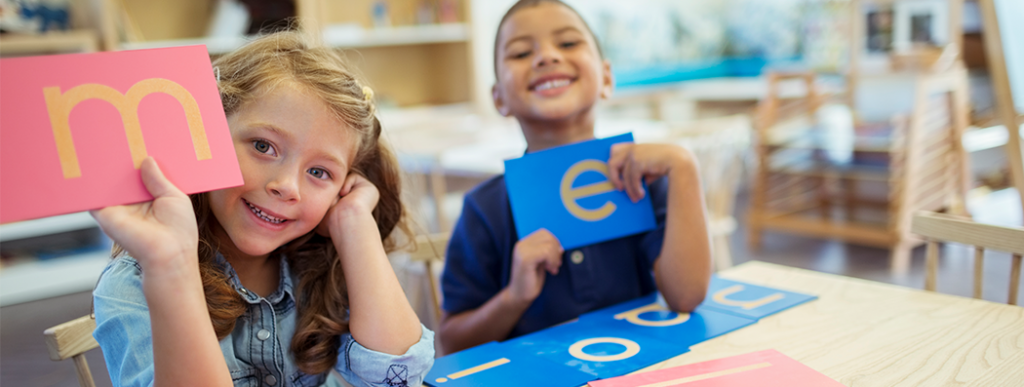Children with learning disabilities often require extra attention and support during classroom activities. Typically, children with learning disabilities have normal intelligence but face issues when it comes to developing reading, writing, and mathematical skills.
As an early childhood educator, providing the best quality assistance to children with learning difficulties is extremely important. An early childhood education qualification such as a Diploma of Early Childhood Education and Care can equip you with the right skills and knowledge to successful create a positive learning experience for all students. No student should feel left out. Take a look at these 6 successful strategies you could use to accelerate students learning in and around the classroom:
1. Allow extra time for completing class tasks
For some children with learning disabilities an extra 30 minutes to complete a test is the difference between passing and failing; especially for students with Dyslexia. Students with Dyslexia find reading and processing written words extremely tricky. When printed on a page, words and letters often appear jumbled or mixed up. According to the Learning Disabilities Association (LDA), Dyslexia is a language-based learning disability, students who have Dyslexia normally have problems reading, decoding letters, comprehending text, writing and spelling. LDA, 2017.
For this very reason, students with Dyslexia should be given extra time to complete exams, tests, written classroom activities and all other summative assessments. This extra time gives students a chance to work through tests at their own pace.
2. Use a tape recorder
This is a great learning resource for assisting students with Dyslexia. Because Dyslexic students face trouble reading, global leaders in assistive technology and disability support Iansyst suggest using a tape recorder to translate directions and instructions verbally. Iansyst, 2014
Rather than providing a student with a written handout, try recording your instructions on a personal tape recorder and handing it to the child to listen to. This way, instead of struggling through a list of instructions, the student can sit at their desk and listen to the instructions through a private headset whilst others take their time reading.

3. Reduce need for writing
Children who have Dysgraphia have problems writing letters and words. According to the Learning Disabilities Association, children with this disability generally have illegible handwriting, inconsistent spacing, poor spelling and difficulty composing sentences. The greatest issue however is their inability to think and write at the same time. LDA, 2017
To help excel their learning reduce their need for writing. This can be done by providing copies of class instructions, notes, outlines or pre-printed study sheets in class, instead of asking them to copy down notes from the whiteboard or text-book. Another effective learning strategy for students with Dysgraphia is the incorporation of ICT and special learning software in assessment. Instead of grading them on a written report, allow students to present their work through a range of pictures, sounds and videos.
4. Keep classroom chatter to a minimum
Although this is an obvious classroom rule across all learning environments, students with learning disabilities will find it easier to focus when it is quiet and their area is free from distractions.
To help the student stay settled and focus, consider where the student would best be seated. Is it best if the student sits away from windows and doors to minimise distractions from visitors, birds or the weather? Is it best if the student sits directly opposite your desk? Should the student be seated next to their best friend to encourage a feeling relaxation? Try creating a silent reading corner, or a quiet thinking desk. These places promote a safe place for students to visit and silently work.
Pro tip: Classrooms set up with seats in rows, with focus on the teacher, will work better than having students seated around tables or facing one another in other arrangements.
5. Use visual aids and multi-sensory learning techniques
Try multi-sensory learning techniques that will engage students who have difficulty focusing and paying attention. Multi-sensory learning is the integration of sight, sound and touch. According to Dyslexia Reading Well multi-sensory leaning can activate different parts of the brain and is especially effective for Dyslexic students. Dyslexia Reading Well, 2017
Visual: Try to incorporate lots of visual cues during lessons such as posters, videos, graphs and charts. You could also use coloured coded whiteboard markers when writing on the whiteboard to highlight important topics.
Sound: Try to incorporate lots of singing, dancing, rhyming, audio tones, clapping and discussion. Dyslexic students can also be supplied with audiobooks. This is commonly referred to in the education word as ‘reading with your ears.’
Touch: Physical things help aide the learning of students with disabilities, especially in topics such as math and science. For example: wooden counting cubes for math, clocks with adjustable hands for time, fake notes and coins for money or plastic cakes and pies for fractions.

6. Assign them a ‘study buddy’
Known as class-mate peer coaching, the act of assigning two students together can promote active learning environments that nurture and support positive learning experiences. For students with learning disabilities this is a great way to subtly make sure they are engaged and receiving the correct resources they need to succeed. Sometimes assigning a student a classroom Support Aide (although sometimes necessary) can feel isolating. After all, no young child wants to feel different! Instead, try pairing them with a more senior student who excels during classroom learning activities or who has a great academic record. Students who actively help other students learn are reinforcing their own learning by instructing others! And the student receiving the in-class assistance will feel more comfortable and open interacting with others.

Do you have what it takes to become a qualified Early Childhood Education and Care provider? Check out the course outline. Or if you prefer to speak to a Course Advisor, call us on 1300 236 364.
